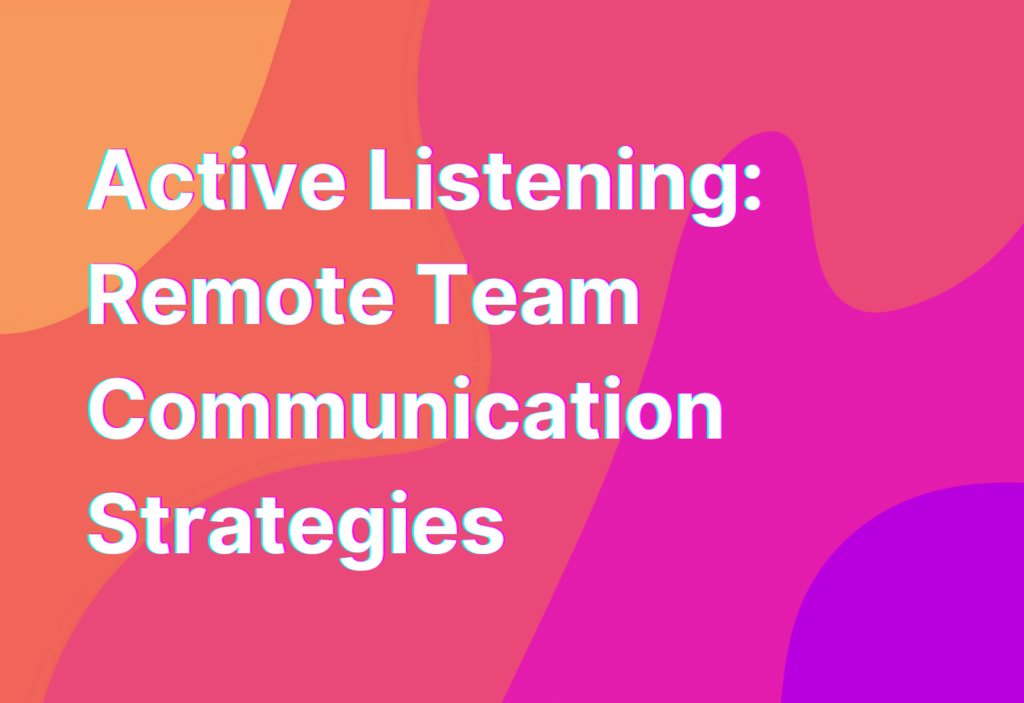Active Listening: Remote Team Communication Strategies
Hey there, remote work warriors! It’s Ashley, your friendly neighborhood remote work advocate, back with another dose of helpful advice for all you remote teamers out there. Today, we’re diving into the wonderful world of active listening and how it can supercharge your remote team communication. So grab your favorite cup of coffee (or tea, if that’s your thing) and let’s get started!
What is Active Listening?
Active listening is more than just hearing what someone is saying. It’s about fully engaging with the speaker, understanding their message, and responding in a way that shows you truly comprehend what they’re saying. In a remote team setting, where face-to-face interactions are limited, active listening becomes even more crucial for effective communication.
Now, you might be thinking, “Ashley, how can I actively listen when I can’t physically be in the same room as my team members?” Well, fear not! I’ve got some tried-and-true strategies that will help you become an active listening pro, no matter where you’re located.
1. Give Your Undivided Attention
When you’re in a remote meeting or having a one-on-one conversation with a team member, it’s important to eliminate distractions and give your undivided attention. Close those extra browser tabs, put your phone on silent, and focus on the conversation at hand. Trust me, your team members will appreciate your full attention.
2. Use Verbal and Non-Verbal Cues
Just because you’re not physically present doesn’t mean you can’t use verbal and non-verbal cues to show that you’re actively listening. Nodding your head, using affirming phrases like “I see” or “That makes sense,” and even using emojis in chat conversations can all help convey that you’re engaged and understanding what’s being said.
3. Ask Clarifying Questions
Don’t be afraid to ask clarifying questions if something isn’t clear to you. Remote communication can sometimes lead to misunderstandings, so it’s better to ask for clarification upfront rather than making assumptions. Plus, asking questions shows that you’re actively listening and genuinely interested in understanding the message.
4. Paraphrase and Summarize
One of the best ways to show that you’re actively listening is to paraphrase and summarize what the speaker has said. This not only helps you internalize the information but also allows the speaker to confirm that you’ve understood their message correctly. It’s like a win-win for effective communication!
5. Practice Empathy
Empathy is a superpower when it comes to active listening. Put yourself in the speaker’s shoes and try to understand their perspective. Remote work can sometimes feel isolating, so showing empathy and acknowledging the challenges your team members may be facing can go a long way in building trust and fostering open communication.
And there you have it, my fellow remote work enthusiasts! By implementing these active listening strategies, you’ll be well on your way to becoming a communication superstar in your remote team. Remember, effective communication is the key to a successful remote work experience.
Before I wrap up, I want to leave you with another valuable resource to check out. If you’re interested in boosting your remote team’s brainstorming sessions, be sure to read our article on effective brainstorming for remote teams. It’s chock-full of tips and tricks to help your team generate innovative ideas, even from a distance.
That’s all for now, folks! Keep rocking the remote work life, and remember to always listen actively. Until next time!


